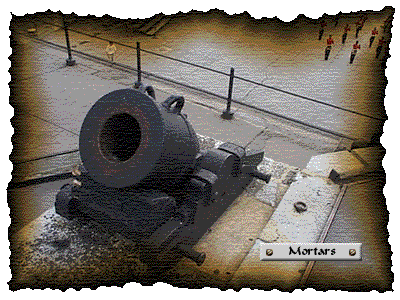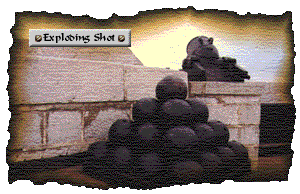
They differ from guns since their trunnions are placed behind the vent. They were designed to fire large heavy projectiles (usually shells) on a high-angle trajectory. Mortars are always named by their calibre.

Brass mortars (5.5" Royal and 4 2/5" Coehorn) were intended chiefly as siege weapons. Iron mortars (8-, 10- and 13-inch) were intended for garrisons, battering trains and naval service.
The shells were often filled with an exploding charge which was ignited by a time fuse designed to explode just prior to reaching the target.
In order to fire their heavy projectiles to a reasonable range, and also to produce the high-angle fire required, mortars were normally fired at a fixed quadrant elevation of 45 degrees, the range being adjusted by varying the weight of the charge.
Shells projected from mortars at 45-degree elevation, make a high curve in their flight, and fall with their full gravity, nearly vertically upon the object to be struck. The large mortars were reasonably effective up to about 2,000 yards.

![]()